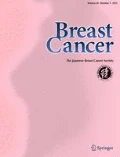Abstract
In prostate cancer, a distinct series of alterations in the fibroblast growth factor (FGF) family occurs during the progression from a hormone-dependent to independent state that disrupts communication between stroma and epithelium and results in autonomy of cancer cells. Changes include (i) loss of FGFR2lllb, which binds stromal-derived FGF-7, which promotes growth, growth limitation and differentiation and (ii) activation of FGFR1, the expression of which is normally limited to stroma, along with activation of FGFs that act on FGFR1 in an autocrine manner. Transfection of the FGFR2lllb isoform into hormone-independent prostate cancer cells not only causes growth inhibition, but also induces differentiation. However, introduction of FGFR1 by transfection in hormone-dependent prostate cancer cells accelerates their progression to malignancy. These results suggest distinct targets for therapy aimed at both inhibition of the malignant phenotype and restoration of homeostasis.
Similar content being viewed by others
Abbreviations
- FGF:
-
Fibroblast growth factor
- FGFR:
-
Fibroblast growth factor receptor
References
Yan G, Fukabori Y, Nikolaropoulos S,et al: Heparinbinding keratinocyte growth factor is a candidate stromal-to-epithelial-cell andromedin.Mol Endocrinol 6:2123–2128, 1992.
Sugimura Y, Foster BA,et al: Keratinocyte growth factor (KGF) can replace testosterone in the ductal branching morphogenesis of the rat ventral prostate.Int J Dev Biol 40:941–951, 1996.
Lu W, Luo Y, Kan M,et al: Fibroblast growth factor-10; A second candidate stromal to epithelial cell andromedin in prostate.J Biol Chem 274:12827–12834, 1999.
Yan G, Fukabori Y, McBride G,et al: Exon switching and activation of stromal and embryonic fibroblast growth factor (FGF)-FGF receptor genes in prostate epithelial cells accompany stromal independence and malignancy.Mol Cell Biol 13:4513–4522, 1993.
Feng S, Wang F, Matsubara A,et al: Fibroblast growth factor receptor 2 limits and receptor 1 accelerates tumorigenicity of prostate epithelial cells.Cancer Res 57:5369–5378, 1997.
Yan G, McBride G, McKeehan WL: Exon skipping causes alteration of the COOH-terminus and deletion of the phospholipase C gamma 1 interaction site in the FGF receptor 2 kinase in normal prostate epithelial cells.Biochem Biophys Res Commun 194:512–518, 1993.
Wang F, Kan M, Xu J,et al: Ligand-specific structural domains in the fibroblast growth factor receptor.J Biol Chem 270:10222–10230, 1995.
McKeehan WL, Adams PS, Fast D: Different hormonal requirements for androgen-independent growth of normal and tumor epithelial cells from rat prostate.In Vitro Cell Devel Biol 23:147–152, 1987.
Mansson PE, Adams P, Kan M,et al: Heparin-binding growth factor gene expression and receptor characteristics in normal rat prostate and two transplantable rat prostate tumors.Cancer Res 49:2485–2494, 1989.
Isaacs JT: Development and characteristics of the available animal model systems for the study of prostate cancer. In: N Bruchovsky WA, Gardner MI, Resnick PP Karr, DS Coffey eds, Current Concepts and Approaches to the Study of Prostate Cancer, New York, Alan R. Liss, Inc, pp573–576, 1987.
Matsubara A, Kan M, Feng S,et al: Inhibition of growth of malignant rat prostate tumor cells by restoration of fibroblast growth factor receptor 2.Cancer Res 58:1509–1514, 1998.
Kan M, Shi EG, McKeehan WL: Identification and assay of fibroblast growth factor receptors.Methods Enzymol 198:158–171, 1991.
Ornitz DM, Xu J, Colvin JS,et al: Receptor specificity of the fibroblast growth factor family.J Biol Chem 271:15292–15297, 1996.
Rabin SJ, Cleghon V, Kaplan DR: SNT, a differentiation-specific target of neurotrophic factor-induced tyrosine kinase activity in neurons and PC12 cells.Mol Cell Biol 13:2203–2213, 1993.
Wang JK, Xu H, Li HC,et al: Broadly expressed SNT-like proteins link FGF receptor stimulation to activators of Ras.Oncogene 13:721–729, 1996.
Ong SH, Goh KC, Lim YP,et al: SUC1-associated neurotrophic factor target (SNT) protein is a major FGF-stimulated tyrosine phosphorylated 90-kDa protein which binds to the SH2 domain of GRB2.Biochem Biophys Res Commun 225:1021–1026, 1996.
Su WC, Kitagawa M, Xue N,et al: Activation of Stat1 by mutant fibroblast growth-factor receptor in thanatophoric dysplasia type II dwarfism.Nature 386:288–292, 1997.
Carstens RP, Eaton JV, Krigman HR,et al: Alternative splicing of fibloblast growth factor receptor 2 (FGF-R2) in human prostate cancer.Oncogene 15:3059–3065, 1997.
Author information
Authors and Affiliations
About this article
Cite this article
Matsubara, A., Yasumoto, H. & Usui, T. Hormone refractory prostate cancer and fibroblast growth factor receptor. Breast Cancer 6, 320–324 (1999). https://doi.org/10.1007/BF02966447
Issue Date:
DOI: https://doi.org/10.1007/BF02966447




